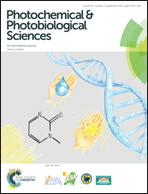Characterizing rhodopsin signaling by EPR spectroscopy: from structure to dynamics
Abstract
Electron paramagnetic resonance (EPR) spectroscopy, together with spin labeling techniques, has played a major role in the characterization of rhodopsin, the photoreceptor protein and G protein-coupled receptor (GPCR) in rod cells. Two decades ago, these biophysical tools were the first to identify transmembrane helical movements in rhodopsin upon photo-activation, a critical step in the study of GPCR signaling. EPR methods were employed to identify functional loop dynamics within rhodopsin, to measure light-induced millisecond timescale changes in rhodopsin conformation, to characterize the effects of partial agonists on the apoprotein opsin, and to study lipid interactions with rhodopsin. With the emergence of advanced pulsed EPR techniques, the stage was set to determine the amplitude of structural changes in rhodopsin and the dynamics in the rhodopsin signaling complexes. Work in this area has yielded invaluable information about mechanistic properties of GPCRs. Using EPR techniques, receptors are studied in native-like membrane environments and the effects of lipids on conformational equilibria can be explored. This perspective addresses the impact of EPR methods on rhodopsin and GPCR structural biology, highlighting historical discoveries made with spin labeling techniques, and outlining exciting new directions in the field.

- This article is part of the themed collection: 16th International Conference on Retinal Proteins

 Please wait while we load your content...
Please wait while we load your content...